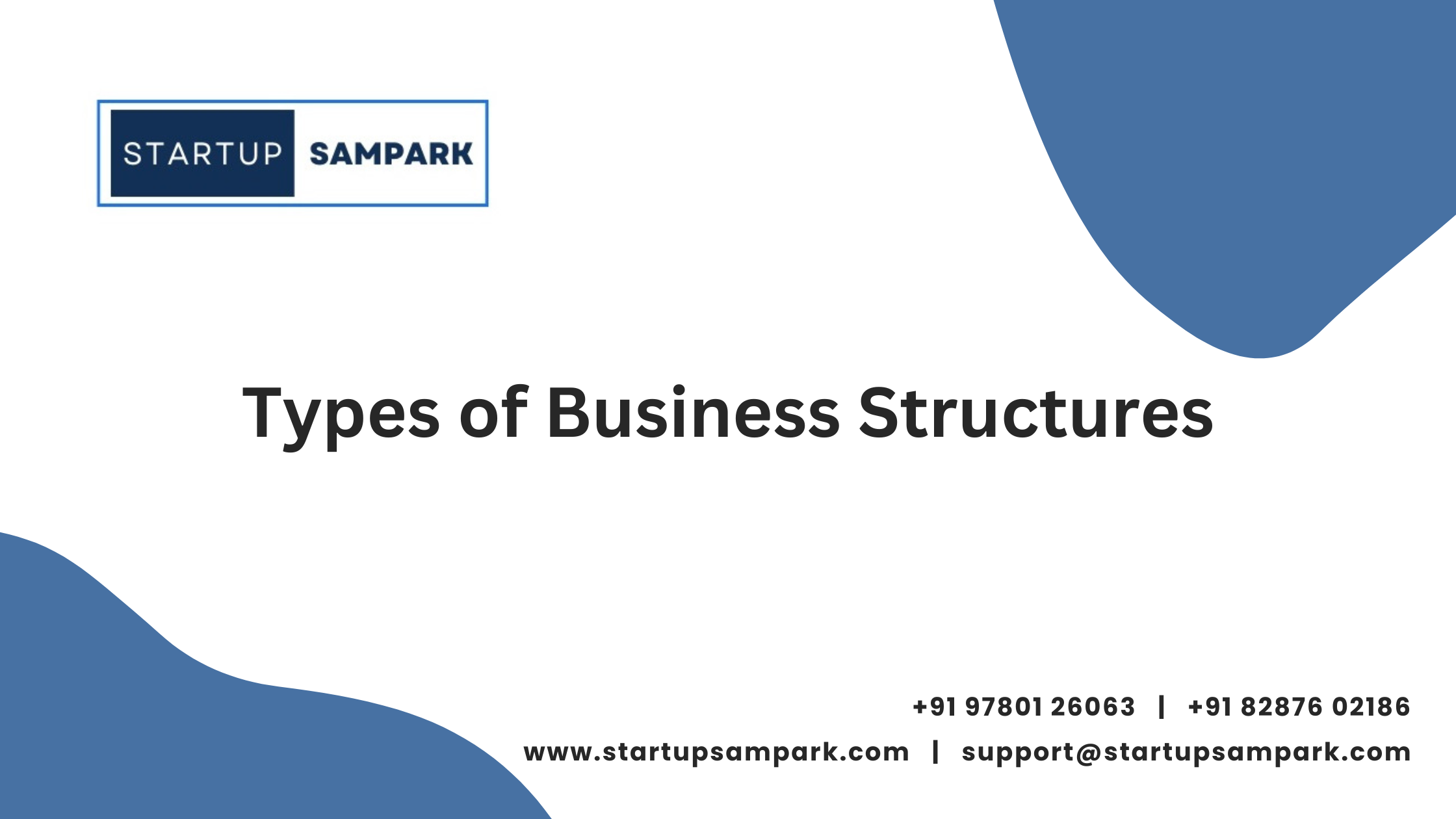Types of Business Structures
Choosing the right business structure is a crucial decision for entrepreneurs and business owners. It affects everything from daily operations and personal liability to taxation and financial requirements. In this blog, we’ll explore the primary types of business structures, their advantages, disadvantages, and how they align with different business goals.
1. Sole Proprietorship
Overview: The sole proprietorship is the simplest and most common type of business structure. It’s an unincorporated business owned and operated by one individual.
Advantages:
- Ease of Setup: Minimal paperwork and low startup costs. You only need to register your business name and obtain the necessary licenses.
- Complete Control: As the sole owner, you have full control over all business decisions.
- Tax Benefits: Profits and losses are reported on your personal tax return, potentially simplifying tax filing.
Disadvantages:
- Unlimited Liability: You are personally liable for all debts and obligations of the business. Your personal assets are at risk if the business faces legal issues.
- Limited Growth Potential: Raising capital can be challenging, and the business’s growth may be limited by your resources and expertise.
2. Partnership
Overview: A partnership involves two or more individuals who share ownership of a business. There are two main types: general partnerships and limited partnerships.
General Partnership:
- Advantages: Shared responsibility and resources. Each partner can contribute their skills and expertise.
- Disadvantages: Partners share unlimited liability, meaning personal assets are at risk. Disputes between partners can also arise.
Limited Partnership:
- Advantages: Includes general partners who manage the business and limited partners who invest but do not participate in management. Limited partners have liability protection.
- Disadvantages: Limited partners have less control and influence over business decisions. General partners retain full liability.
-
 Startup Registration (DPIIT Recognition)₹8,850.00
Startup Registration (DPIIT Recognition)₹8,850.00
3. Limited Liability Company (LLC)
Overview: An LLC is a hybrid structure that combines the flexibility of a partnership with the liability protection of a corporation.
Advantages:
- Limited Liability: Owners (members) are not personally liable for business debts and liabilities.
- Tax Flexibility: LLCs can choose how they want to be taxed, either as a sole proprietorship, partnership, or corporation.
- Operational Flexibility: Fewer formalities and regulations compared to a corporation.
Disadvantages:
- Complex Formation: Requires more paperwork and costs compared to a sole proprietorship or partnership.
- State-Specific Regulations: Rules and regulations can vary by state, which may impact compliance and operations.
4. Corporation
Overview: A corporation is a legal entity that is separate from its owners. It can be classified into different types, including C corporations and S corporations.
C Corporation:
- Advantages: Offers strong liability protection for owners and can raise capital by issuing stock. The corporation itself pays taxes on its profits.
- Disadvantages: Subject to double taxation—corporate profits are taxed, and dividends paid to shareholders are also taxed. Requires extensive record-keeping and compliance with regulations.
S Corporation:
- Advantages: Allows profits and losses to pass through to shareholders’ personal tax returns, avoiding double taxation. Limited liability protection is provided.
- Disadvantages: Subject to strict eligibility requirements and operational restrictions. Limited to 100 shareholders and only one class of stock.
5. Cooperative
Overview: A cooperative (or co-op) is a business owned and operated by its members, who use the co-op’s services and share in its profits.
Advantages:
- Member Control: Each member has a say in business decisions, typically on a one-member, one-vote basis.
- Shared Profits: Profits are distributed among members based on their use of the co-op’s services.
Disadvantages:
- Complex Setup: Requires detailed bylaws and compliance with cooperative regulations.
- Decision-Making Challenges: Decision-making can be slower due to the need for consensus among members.
6. Nonprofit Organization
Overview: A nonprofit organization is dedicated to furthering a social cause or providing a public benefit. It operates without the goal of making a profit for its owners.
Advantages:
- Tax-Exempt Status: Nonprofits can qualify for tax-exempt status under IRS Section 501(c)(3), meaning they do not pay federal income taxes on donations received.
- Grants and Donations: Nonprofits can apply for grants and receive donations that are tax-deductible for the donors.
Disadvantages:
- Regulatory Requirements: Must adhere to strict regulations and reporting requirements to maintain tax-exempt status.
- Limited Profit Distribution: Any profits made must be reinvested into the organization’s mission rather than distributed to members or directors.
Conclusion
Selecting the right business structure is vital for your business’s success and growth. It affects your liability, tax obligations, and overall management. When making this decision, consider factors such as the level of liability protection you need, the complexity of formation, and your long-term business goals. Consulting with a legal or financial advisor can also provide valuable insights tailored to your specific situation.
Understanding these different business structures will help you make an informed decision that aligns with your vision and sets your business on the path to success.
startup , company incorporation , india
-
 Startup Registration (DPIIT Recognition)₹8,850.00
Startup Registration (DPIIT Recognition)₹8,850.00















Post Comment